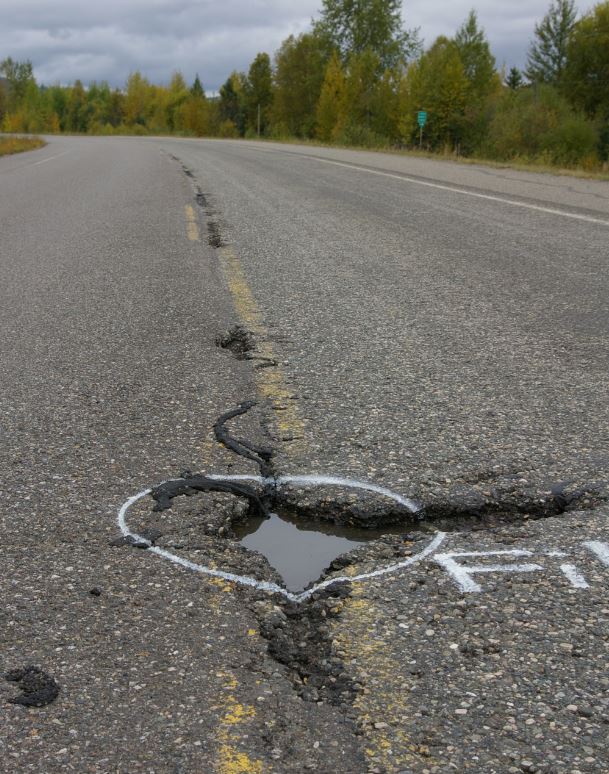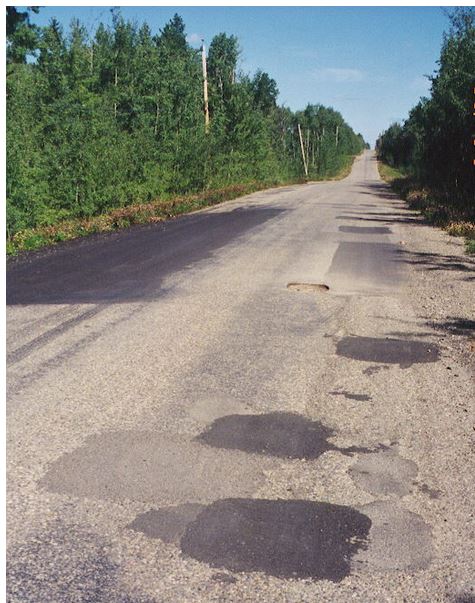
It’s that time of year again. The sun is shining, the birds are singing and the potholes are starting to show. What is it about this season that makes potholes so common, and how do we deal with the problem of perennial pothole patching? Let’s start from the ground up to get you the answers.
How Potholes Form
Our roads are built in layers – a base of earth and gravel, topped with asphalt – an excellent material for road surfaces. Not only is it recyclable, but it’s also durable and it repels moisture. And keeping moisture out is key when it comes to building good roads, especially on the “Wet Coast” of BC.
But like any building material, asphalt wears and cracks eventually start to form. The cracks allow water to get under the road surface and weaken the base of gravel and soil. Without a solid base, the asphalt becomes more vulnerable to cracking as vehicles drive over it. More cracking leads to more moisture, and the cycle continues. The frequent freezing and thawing we experience during the late winter and early spring turbo-charges that process. The ice splits the cracks wider, allowing more moisture to penetrate farther and creating more damage when it freezes next. Once the cycle starts, our roads can get ugly quickly unless the problem is fixed…
How We Fix Potholes
With over 47,000 kilometres of road to look after, you can bet we find a lot of potholes! So, how do we prioritize pothole repair? It’s kind of like a triage system for wounded roads.
Depending on the where the pothole is located, it may need to be filled within days or even hours. For example, a pothole that’s in the travel path of a main highway gets priority over those on the shoulder or on a low volume road. The size of the hole also plays a factor, with larger ones having priority over smaller ones.
The best time to fill potholes is when the weather is warm and dry. But when a pothole poses a safety issue, we often can’t wait for ideal weather. We fill the hole with a temporary fix during the winter season and plan on returning during the summer to make a permanent repair.
Unfortunately, because the patching material doesn’t bond well to the road surface in wet, cold conditions, it’s not uncommon to see a pothole needing repair again shortly after it was filled. In fact, we might make a number of temporary repairs to a pothole before the weather improves and a more permanent fix can be made. The colder and wetter the spring, the more often repairs are required.

Ministry staff and our maintenance contractors travel the roads regularly, looking for problems. We also value reports from the public as potholes can appear quickly, and the more eyes we have on the road, the faster we can find out about possible problems. If you see a pothole during your travels, please give our maintenance contractors a call and make sure they’re aware of it. There are 28 maintenance contractors throughout the province, and you can find the one for your area here.
Join the discussion